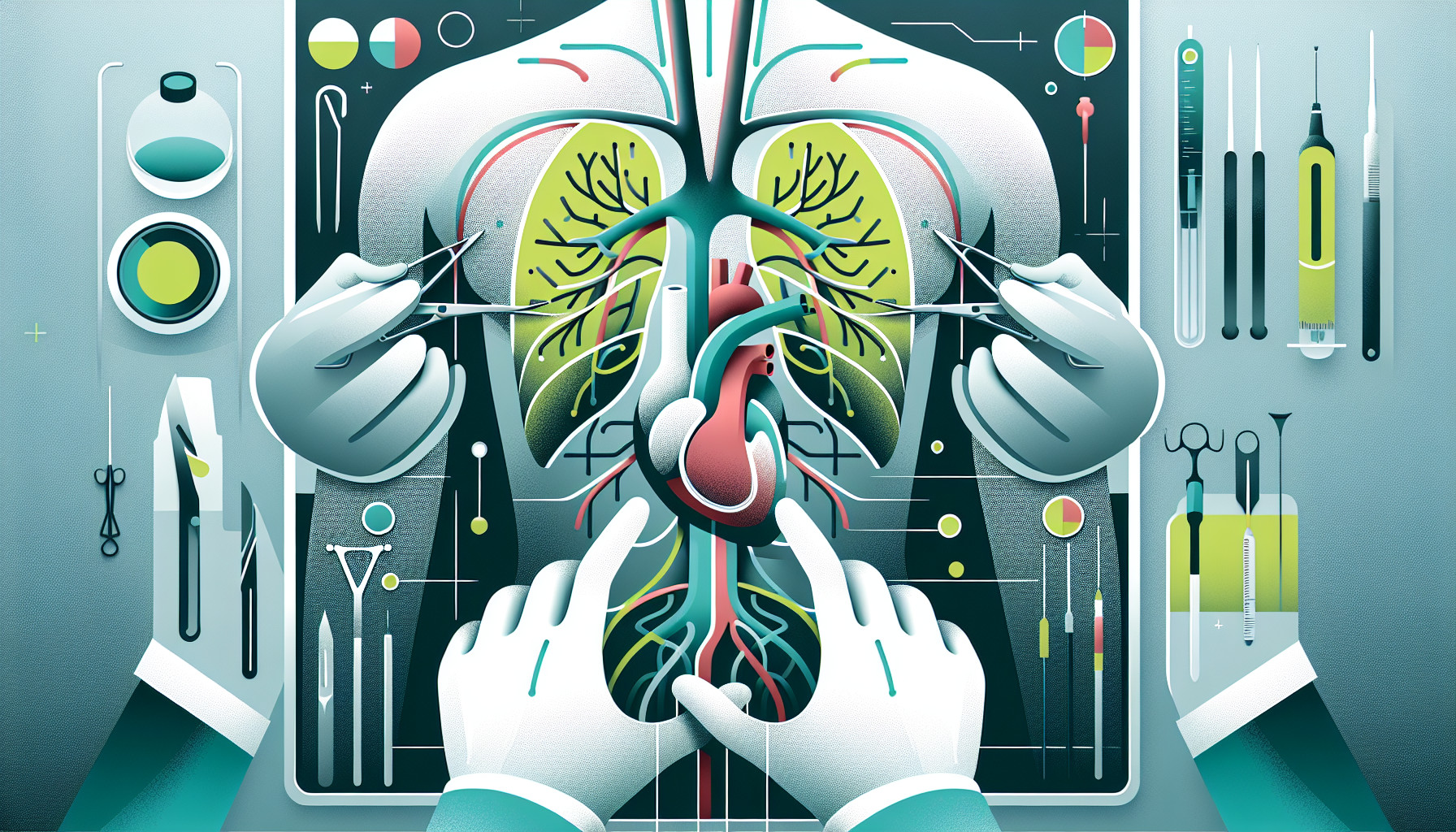Our Summary
This research paper compares how abdominal aortic aneurysms (AAA), a serious condition where the large blood vessel that supplies blood to the abdomen, pelvis, and legs becomes enlarged, are treated in Canada and the United States. The authors looked at data from 2010 to 2019 and found that more Americans than Canadians had their AAA repaired when it was smaller than the size at which guidelines suggest surgery is necessary. This might be because a higher percentage of the American patients’ surgeries were done using a less invasive method called endovascular repair. The study also found that American patients tended to have more health issues, like high blood pressure, heart failure, and kidney disease. However, the number of patients who died either shortly after the surgery or within a year was similar in both countries. The authors suggest that more research is needed to understand these differences and to ensure that care is standardized.
FAQs
- What is an abdominal aortic aneurysm (AAA) and how is it treated?
- What differences were noted in the treatment of AAA between Canada and the United States, according to the research?
- What do the authors suggest as a result of the differences in AAA treatment found between the two countries?
Doctor’s Tip
One helpful tip a doctor might tell a patient about aortic aneurysm repair is to closely follow post-operative care instructions, including taking prescribed medications, attending follow-up appointments, and making necessary lifestyle changes such as quitting smoking and maintaining a healthy diet and regular exercise routine. It is important to monitor for any signs of complications, such as sudden severe pain, difficulty breathing, or a pulsating mass in the abdomen, and seek medical attention immediately if any concerning symptoms arise. Compliance with medical recommendations can help ensure a successful recovery and reduce the risk of future complications.
Suitable For
Patients who are typically recommended aortic aneurysm repair include:
Patients with an abdominal aortic aneurysm (AAA) that is larger than 5.5 centimeters in diameter, as this is the size at which guidelines suggest surgery is necessary to prevent rupture.
Patients with symptoms such as abdominal pain, back pain, or a pulsating sensation in the abdomen, which may indicate that the AAA is at risk of rupture.
Patients with a rapidly growing AAA, as this may also increase the risk of rupture.
Patients with risk factors for AAA, such as a family history of AAA, smoking, high blood pressure, or atherosclerosis.
Patients with a history of other cardiovascular conditions, such as heart failure or kidney disease, which may increase the risk of complications during surgery.
Patients who are in good overall health and are able to withstand the risks of surgery.
It is important for patients with AAA to undergo regular screening and monitoring to detect any changes in the size or growth rate of the aneurysm, and to discuss treatment options with their healthcare provider.
Timeline
Before aortic aneurysm repair:
- Patient may experience symptoms such as abdominal or back pain, a pulsating feeling in the abdomen, or other signs of aortic aneurysm.
- Patient undergoes diagnostic tests such as ultrasound, CT scan, or MRI to confirm the presence and size of the aneurysm.
- Patient may be monitored regularly to track the growth of the aneurysm and determine the appropriate time for intervention.
- Patient may receive lifestyle recommendations such as quitting smoking, managing blood pressure, and maintaining a healthy diet to reduce the risk of complications.
After aortic aneurysm repair:
- Patient undergoes either open surgical repair or endovascular repair to treat the aneurysm.
- Patient is monitored closely in the hospital for complications such as bleeding, infection, or blood clots.
- Patient may need to stay in the hospital for a few days to recover before being discharged.
- Patient follows up with their healthcare provider regularly for follow-up appointments and monitoring of the repaired aneurysm.
- Patient may need to make lifestyle changes such as regular exercise, healthy diet, and medication compliance to prevent the recurrence of aneurysm or other cardiovascular issues.
What to Ask Your Doctor
- What are the risks and benefits of undergoing surgery for my abdominal aortic aneurysm?
- What is the size of my aneurysm and what factors should I consider when deciding whether to have it repaired?
- What type of repair procedure do you recommend for my specific case (open surgery versus endovascular repair)?
- What is the expected recovery time and potential complications associated with the repair procedure?
- How often will I need follow-up appointments and imaging tests to monitor the aneurysm after the repair?
- Are there any lifestyle changes or medications I should consider to reduce my risk of future aneurysm development or complications?
- What is your experience and success rate with performing aortic aneurysm repairs?
- Are there any alternative treatment options or clinical trials that I should consider?
- How will my other health conditions, such as high blood pressure or kidney disease, impact the decision to undergo surgery for the aneurysm?
- Can you provide me with more information on the differences in AAA repair between Canada and the United States, and how that might impact my treatment plan?
Reference
Authors: Li B, Rizkallah P, Eisenberg N, Forbes TL, Roche-Nagle G. Journal: J Vasc Surg. 2022 Mar;75(3):894-905. doi: 10.1016/j.jvs.2021.08.091. Epub 2021 Sep 29. PMID: 34597785
